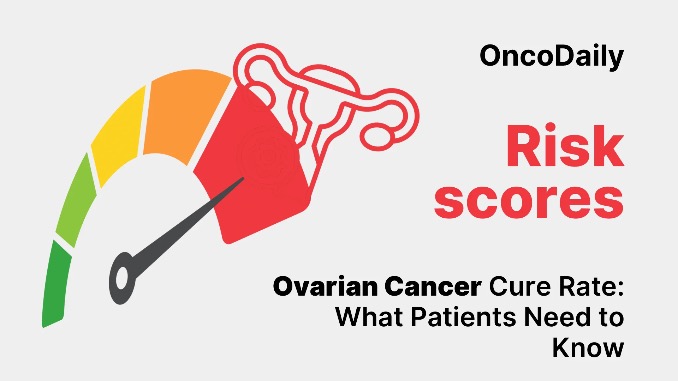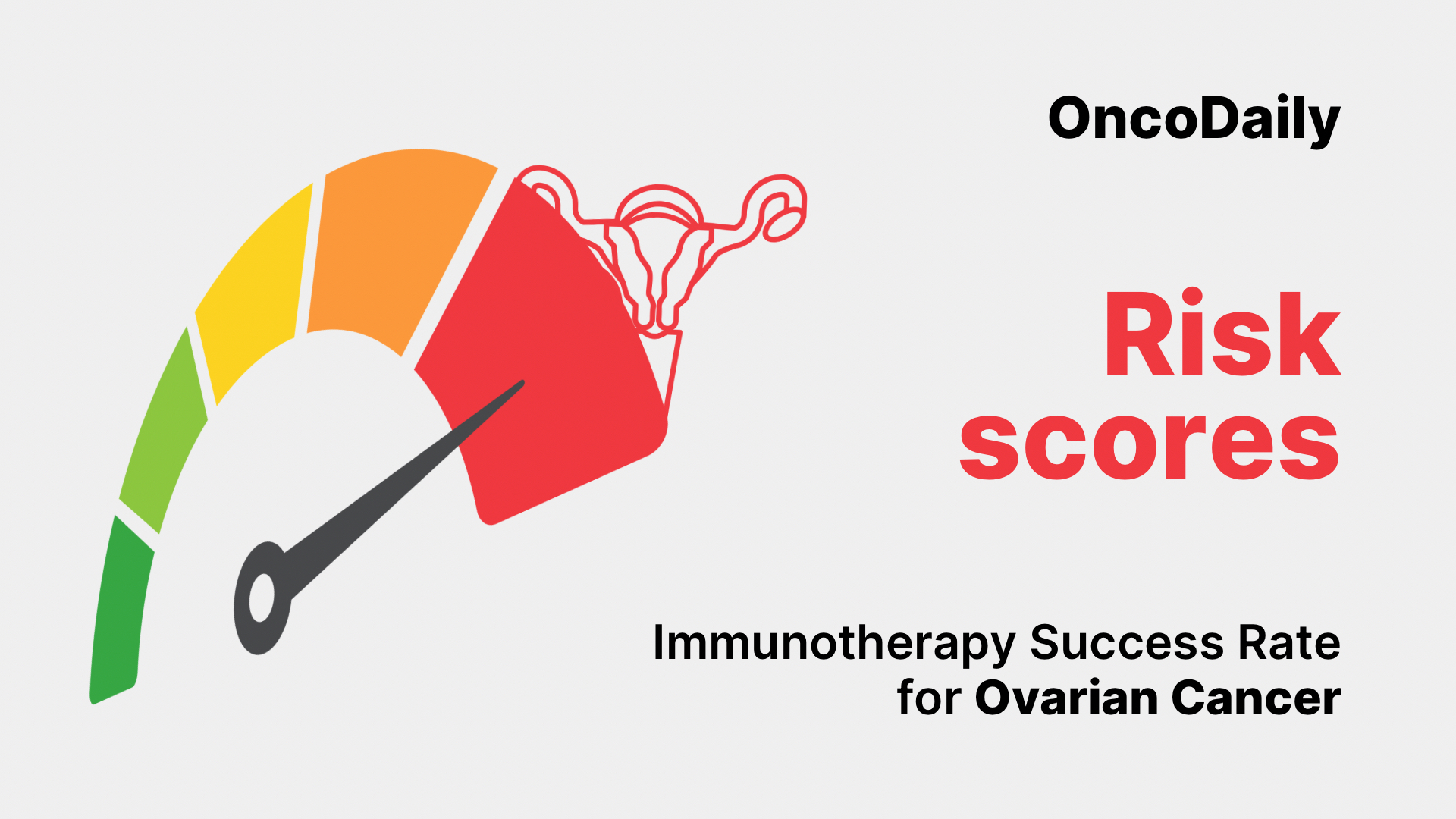The immunotherapy success rate for ovarian cancer has become an increasingly important topic in modern oncology. Ovarian cancer remains one of the most lethal gynecologic malignancies worldwide, with more than 313,000 new cases and over 207,000 deaths reported in 2020 (Sung et al., 2021). Despite improvements in surgery and chemotherapy, the five-year survival rate for advanced ovarian cancer remains below 40% (Torre et al., 2018).
Immunotherapy has transformed the treatment landscape for several cancers, such as melanoma and lung cancer. However, when it comes to ovarian cancer, its results have been mixed. Patients and clinicians continue to ask the same question: what is the real immunotherapy success rate for ovarian cancer? This article reviews available evidence, current treatment strategies, and the biological factors influencing outcomes.
Read About Ovarian Cancer on OncoDaily
The Immunologic Environment and Its Impact on Success Rate
Understanding why the immunotherapy success rate for ovarian cancer is modest begins with the tumor microenvironment. Ovarian cancer typically exhibits a low tumor mutational burden, making it less visible to the immune system. The cancer’s microenvironment contains numerous suppressive immune cells—regulatory T cells and tumor-associated macrophages—that inhibit effective immune responses (Zhang et al., 2003).
In many patients, the immune system recognizes the tumor but cannot sustain an attack due to inhibitory pathways like PD-1/PD-L1 and CTLA-4. This immunosuppressive setting limits how effectively immunotherapy can activate anti-tumor immunity, directly influencing the overall immunotherapy success rate for ovarian cancer in clinical trials.
Immune Checkpoint Inhibitors and Their Success Rate
Immune checkpoint inhibitors (ICIs) remain the most widely studied form of immunotherapy in ovarian cancer. Drugs such as pembrolizumab, nivolumab, and atezolizumab aim to block PD-1, PD-L1, or CTLA-4, allowing T cells to regain activity.
In the KEYNOTE-100 trial, pembrolizumab achieved an overall response rate (ORR) of 8.0%, rising to 17% among patients with PD-L1 combined positive scores ≥10 (Matulonis et al., 2019). Although these results are lower than in other cancers, they provide valuable insight into the immunotherapy success rate for ovarian cancer, which appears more favorable in PD-L1-positive patients.
Similarly, nivolumab monotherapy produced a 10% response rate, while combination therapy with ipilimumab raised the response rate to 31% (Hamanishi et al., 2021). Yet, higher efficacy was accompanied by increased immune-related side effects. The IMagyn050 trial, evaluating atezolizumab with chemotherapy and bevacizumab, did not improve progression-free survival (Moore et al., 2021), showing that the immunotherapy success rate for ovarian cancer remains variable depending on the regimen.
Overall, single-agent checkpoint inhibitors achieve response rates between 8% and 15%, with a subset reaching up to 30% in dual-blockade therapy.
Cancer Vaccines and Their Role in Success Rate
Cancer vaccines have been tested as another way to boost the immune system and improve the immunotherapy success rate for ovarian cancer. Vaccines targeting tumor antigens such as MUC1, WT1, or NY-ESO-1 have shown immune activation in clinical trials, but objective tumor responses remain rare.
Dendritic-cell vaccines have generated cautious optimism. Small studies show that personalized vaccines can prolong disease stabilization in select patients (Tanyi et al., 2018). However, these results have not yet translated into significant improvements in the overall immunotherapy success rate for ovarian cancer in large-scale studies.

Read About Ovarian Cancer Cure Rate on OncoDaily
Adoptive Cell Therapy and CAR-T Cell Trials
Adoptive cell therapy (ACT) and CAR-T cell therapy are experimental but promising modalities. ACT involves isolating tumor-infiltrating lymphocytes (TILs) from patients, expanding them ex vivo, and reinfusing them to attack cancer. CAR-T cells are engineered to recognize ovarian cancer antigens such as mesothelin or MUC16.
Although early trials demonstrate biological activity, the immunotherapy success rate for ovarian cancer with ACT or CAR-T remains low because of challenges in tumor infiltration and immune suppression (Mardiana & Solomon, 2019). Researchers are testing ways to enhance CAR-T persistence and combine it with checkpoint inhibitors to raise future success rates.
Combination Strategies Improving Success Rate
Most oncologists agree that combination therapy is key to increasing the immunotherapy success rate for ovarian cancer. Combining immunotherapy with PARP inhibitors, anti-angiogenic agents, or chemotherapy can make “cold” tumors more immunogenic.
The TOPACIO/KEYNOTE-162 trial combined niraparib (a PARP inhibitor) with pembrolizumab and achieved response rates of 18–25%, especially in patients with BRCA mutations (Konstantinopoulos et al., 2019). Similarly, the MEDIOLA study, which paired olaparib with durvalumab, showed encouraging responses in homologous recombination-deficient tumors (Drew et al., 2018).
These findings suggest that synergy between DNA damage repair inhibition and immune activation may meaningfully raise the immunotherapy success rate for ovarian cancer beyond that seen with single agents.
Summary of Clinical Success Rates
When assessing all studies collectively, the immunotherapy success rate for ovarian cancer remains moderate but improving.
- For single-agent checkpoint inhibitors, response rates range from 8% to 15%.
- For dual immune checkpoint blockade, responses reach 25–30%.
- For PARP inhibitor–ICI combinations, success rates climb to 20–25%.
- For vaccine and adoptive cell therapies, responses remain below 10% in most trials.
Although these figures may seem low, each represents a crucial step toward identifying responsive patient subgroups.
Biological Barriers That Limit Success
The limited immunotherapy success rate for ovarian cancer reflects its complex biology. Ovarian tumors are immunologically “cold,” with low mutational burden and poor immune infiltration. The peritoneal tumor microenvironment is filled with immunosuppressive factors that block T-cell function. Additionally, patients often present with advanced disease, where immune exhaustion and tumor heterogeneity are pronounced.
Overcoming these barriers through precision biomarker selection—such as BRCA status, PD-L1 expression, tumor mutational burden, or immune gene profiling—will be key to improving the immunotherapy success rate for ovarian cancer in the next decade.
Future Directions and Outlook
The next generation of therapies aims to increase the immunotherapy success rate for ovarian cancer by integrating novel technologies. Personalized neoantigen vaccines and bispecific antibodies are showing early promise. Oncolytic viruses are being explored to inflame the tumor microenvironment, while engineered CAR-T and TCR-T cells are being optimized to resist immunosuppression.
Artificial intelligence and bioinformatics are helping identify predictive biomarkers that guide therapy selection. As more data emerge, treatment will become increasingly personalized, allowing higher success rates for well-selected patients.
While current outcomes may seem modest, the trajectory is clear—innovation in immunogenomics, tumor microenvironment modulation, and precision immunotherapy will steadily raise the immunotherapy success rate for ovarian cancer.
Conclusion
The immunotherapy success rate for ovarian cancer remains lower than in many other cancer types, with single-agent checkpoint inhibitors achieving modest response rates of 8–15%. However, dual blockade and combination therapies with PARP inhibitors or chemotherapy have shown encouraging improvements, reaching up to 30% in select groups.
Despite the challenges, ongoing trials and technological advances continue to refine patient selection and enhance immune activation. With the rise of biomarker-driven treatment and combination approaches, the immunotherapy success rate for ovarian cancer is expected to rise in the coming years, offering new hope for patients facing this difficult disease.
You Can Watch More on OncoDaily Youtube TV
Written by Armen Gevorgyan, MD
